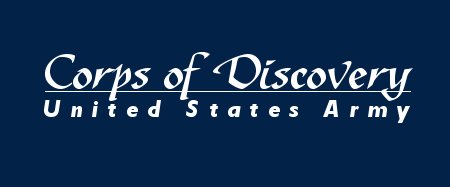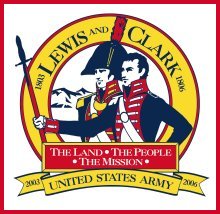The U.S. Army and the Lewis & Clark
Expedition
The U.S. Army in 1803
With the election of Thomas Jefferson to the presidency in 1800, the
Army received close attention. Contrary to popular opinion, Jefferson
increased the size of the army, expanded its role to include building
of the nation, reformed its leadership, established the United States
Military Academy at West Point, New York (1802), and paid particular
attention to military affairs along the frontier. The United States
Army in 1803 was organized under the Military Peace Establishment of
16 March 1802. This organization allowed for two regiments of infantry,
one regiment of artillery, a small corps of engineers, and the general
staff - a total of 3,287 officers and men. All three line regiments
were represented on the Lewis and Clark Expedition.
Jefferson was both determined to maintain peace with the Indians and
fascinated with western exploration. With the purchase of the Louisiana
Territory on April 30, 1803, Jefferson chose the Army to explore this
region. It was no accident that the new nation and its president turned
to the Army for this most important mission. Soldiers possessed the
toughness, teamwork, discipline, and training appropriate to the rigors
they would face. The Army also had a nationwide organization even in
1803 and thus the potential to provide requisite operational and logistical
support. Perhaps most important, the Army was already developing leaders
of character and vision: soldiers such as Captains Meriwether Lewis
and William Clark, and the outstanding noncommissioned officers - John
Ordway, Charles Floyd, Nathaniel Pryor, Patrick Gass, and Richard Warfington
- who served with them.
Perhaps the greatest achievement of the Army during the Jefferson administration
was the famous Lewis and Clark Expedition. From the summer of 1803 to
the fall of 1806, the Expedition was an Army endeavor, officially called
the "Corps of Volunteers for North Western Discovery." It
led Americans across the breadth of the vast continent for the first
time. Its scientific agenda brought back invaluable information about
flora, fauna, hydrology, and geography. Its benign intent resulted in
peaceful commerce with Indians encountered en route. The Expedition
was, all things considered, a magnificent example of America's potential
for progress and creative good.





